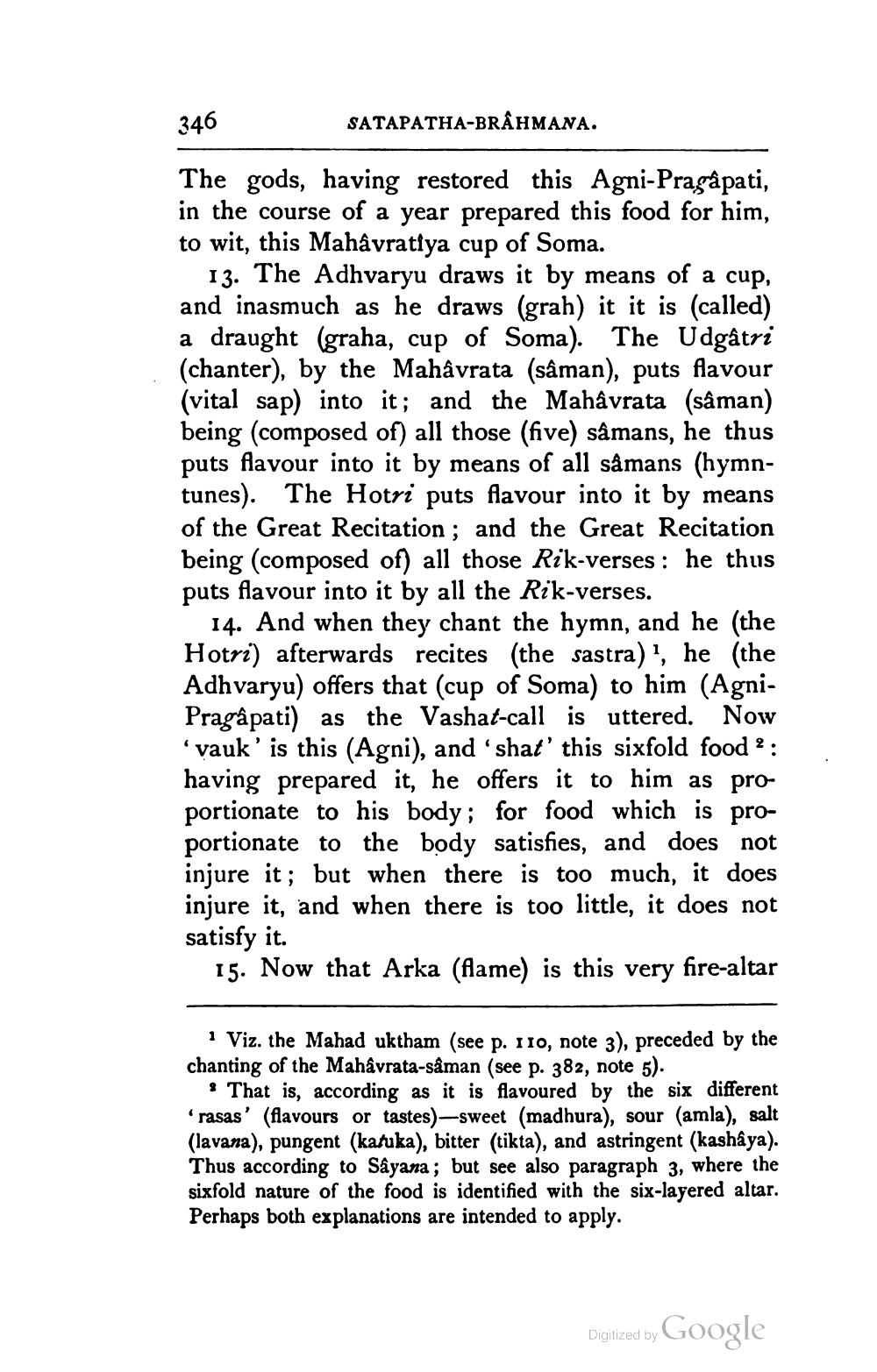________________
346
SATAPATHA-BRÂHMANA.
The gods, having restored this Agni-Pragâpati, in the course of a year prepared this food for him, to wit, this Mahâvratiya cup of Soma.
13. The Adhvaryu draws it by means of a cup, and inasmuch as he draws (grah) it it is (called) a draught (graha, cup of Soma). The Udgâtri (chanter), by the Mahâvrata (sâman), puts flavour (vital sap) into it; and the Mahâvrata (saman) being (composed of) all those (five) samans, he thus puts flavour into it by means of all såmans (hymntunes). The Hotri puts flavour into it by means of the Great Recitation; and the Great Recitation being (composed of) all those Rik-verses : he thus puts flavour into it by all the Rik-verses.
14. And when they chant the hymn, and he (the Hotri) afterwards recites (the sastra), he (the Adhvaryu) offers that (cup of Soma) to him (AgniPragâpati) as the Vashat-call is uttered. Now 'vauk' is this (Agni), and 'shat' this sixfold food ? : having prepared it, he offers it to him as proportionate to his body; for food which is proportionate to the body satisfies, and does not injure it; but when there is too much, it does injure it, and when there is too little, it does not satisfy it.
15. Now that Arka (flame) is this very fire-altar
· Viz. the Mahad uktham (see p. 110, note 3), preceded by the chanting of the Mahavrata-såman (see p. 382, note 5).
That is, according as it is flavoured by the six different 'rasas' (Alavours or tastes)—sweet (madhura), sour (amla), salt (lavana), pungent (katuka), bitter (tikta), and astringent (kashấya). Thus according to Sâyana; but see also paragraph 3, where the sixfold nature of the food is identified with the six-layered altar. Perhaps both explanations are intended to apply.
Digitized by Google




